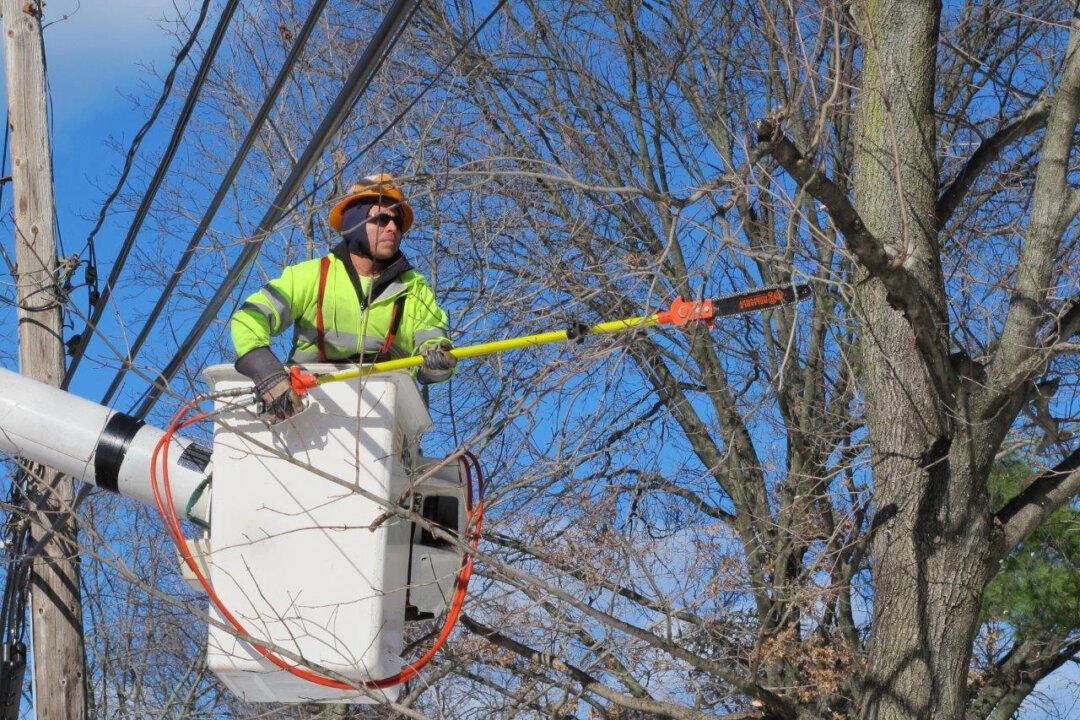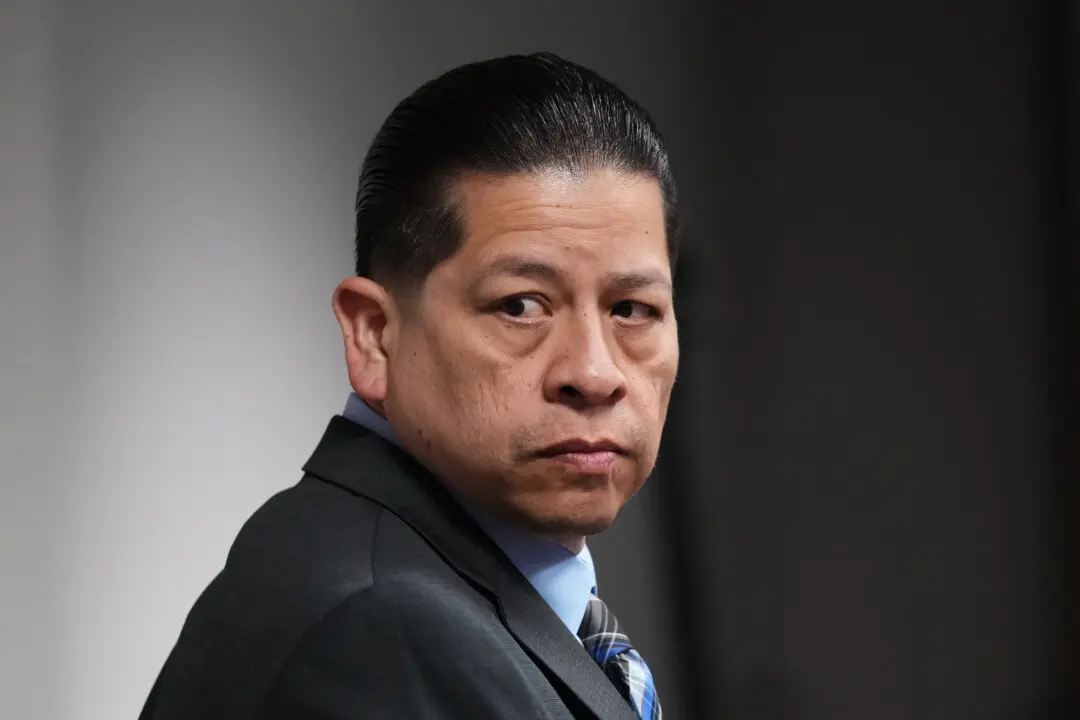MINEOLA, N.Y.—Electric utilities that spent billions of dollars hardening infrastructure after Superstorm Sandy hit New York and New Jersey in 2012 say those upgrades helped keep the lights on during last weekend’s blizzard.
The wind whipped and the snow piled up by the foot, but compared to many previous storms, power outages were mild.
Consolidated Edison, which serves 3 million customers in New York City and its northern suburbs, reported that only 4,500 customers lost power. On Long Island, where Atlantic storms have a history of playing havoc with overhead power lines, utility PSEG reported that fewer than 30,000 of its 1.1 million customers had an outage.

David Suker pulls his son Tadhg Suker during heavy snowfall in New York's Times Square, Saturday, Jan. 23, 2016, as a large winter storm rolls up the East Coast. The Sukers were on their way to a movie theater. AP Photo/Craig Ruttle





